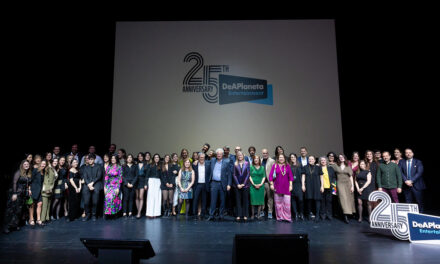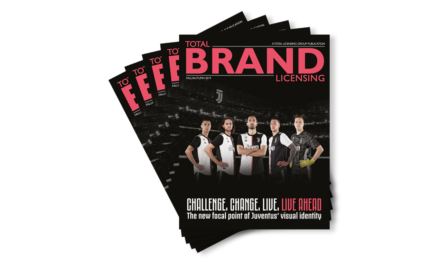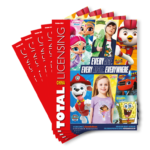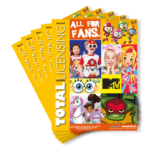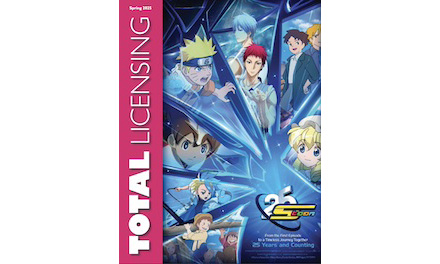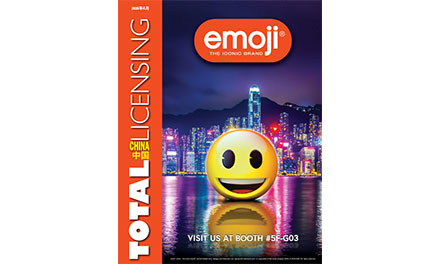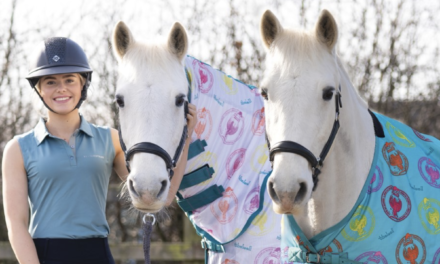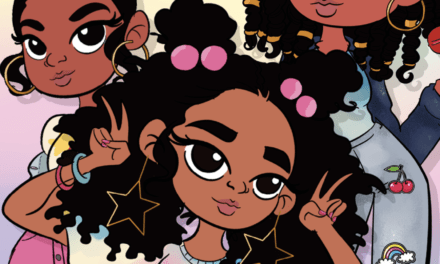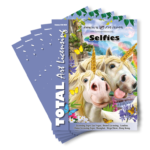
Not Working with Influencers? Maybe you should…

By Gordon Glenister, Global head of Influencer marketing at the Branded Content Marketing Association
Influencer marketing is one of the fastest growing advertising media today with major brands like I Saw it First, Boohoo and Nike all embracing influencer strategies. Estee Lauder is set to spend 75% of its advertising budget in influencer marketing as it owns more than 30 skincare, hair and make-up brands.
According to surveys 90% of marketers now use some form of influencer marketing strategy and its seen by many as one of the best online acquisition methods. B
The global industry is expected to top $10bn in 2020 in less than 10 years, although I think this is understated. We have seen a major shift in our society where social media influencers are the stars and have huge pulling power for brands. As publishers of content they can drive considerable sales for retailers and brands, often with original, authentic and engaging story telling. YouTube, Facebook and Instagram are the key channels for retailers now.
The BCMA, Branded Content Marketing Association launched a new Influence division in the summer to help promote the values of using and working with accredited influencers. This is an important move for brands to help them feel confident in working with the best influencer agencies and platforms as well as the individuals themselves.
The licensing industry is developing more ties with influencers but there is still considerable opportunity as was identified on a recent trip of mine to Brand Licensing Expo. Such is the success of the growth that the larger influencers as well as working with brands are also developing their own products and apparel ranges
One individual who has embraced this is the CEO of Social Store, Ian Shepherd who was behind the successful launch of Hearts by Tiana. The 12-year-old YouTube sensation Tiana Wilson has a 16m following and a very engaged teenage audience. For a brand this is liquid gold. Her net worth is over £3m. Ian worked with her to create a range of apparel and merchandise which is now sold in over 1000 Asda stores and online. At a recent event in the Autumn, over 20,000 visitors came to the pop-up store in 2 days and with sales from £20 to a maximum of £344 and average a sale every 20 seconds. Hundreds queued for as much as 5 hours to meet their star even in the pouring rain.
Another specialist is Event Merchandising. Event Merchandising have been involved with a number of influencers from DanTDM, Saccone Joly’s, Tomska, KSI, Dan and Phil creating a range of merchandise to be sold in various channels, including pop up shops, global tours and dedicated online stores. DanTDM is one of the world’s biggest YouTubers, loved by kids and adults alike. His positive and fun attitude have made his channels the place to hang out on YouTube with his 22 million subscribers and 15 billion views, testament to his popularity. DanTDM created a fantastic Arena tour showcasing specially created games, animations and stories that were completely engaging and immersive for the fans.
Event Merchandising designed and created the Contest range featuring three different colour ranges of Tribes to be sold alongside the tour. KSI’s YouTube channel has accumulated over four billion video views and over 20 million subscribers and Event Merchandising created a range of product to be sold on his tour and online.
So how do you find the right influencer
Authenticity is paramount. You want someone who has a passion for what they do and has a high engagement rate, this simply means that their followers are liking, commenting and sharing. Sometimes it’s easy to get hung up on the size of the follower base. The more niche they are sometimes the better. A campaign last year for skincare brand Dermalogica partnered with Made in Chelsea star Georgia Toffolo. The reason, Georgia had herself battled with skin problems and the brand contacted her soon after she appeared on a TV programme sharing her issues. The campaign was filmed in her bathroom carrying out her skincare routine. The product sold out in all retailers within two weeks of the campaign launch. Year on year sales of the product increased by 94% and the campaign reached 5.4m of their target audience. You want influencers to love your product, maybe they would buy it anyway. However, many influencers are very picky about the collaborations they work with as they need to make sure it resonates and reflects their audience.
You can of course try and find influencers yourself on Instagram or YouTube the main channels, but you might like to look at many of the influencer SAS platforms or work with a specialist agency that can help guide you through this. In fact, my advice is always to consider this approach to start with. Campaigns only go wrong when the right process hasn’t been followed or the wrong influencers selected.
How long should a campaign last for
Often influencers are brought into a campaign that involves a range of media, so typically they would last around 6 weeks, but they can vary. More and more brands are now investing in longer term partnerships like Ambassador programmes with a long-lasting impact.
Gifted or paid
Influencers will work with all sorts of brand partnerships. Sometimes they will post about a restaurant or hotel and no payment would be made. However, content creators have to put a lot of time and effort into creating the right content and a lot more goes into this than many would realise. So many are paid. You wouldn’t expect to get an advert in a magazine for free would you. There is no set fee for posts as this is often negotiated and a number of variables and relevance comes into play. Many start-ups and smaller businesses find influencer marketing a far greater return on their investment as they don’t have large marketing budgets.
What should be in the influencer contract
It’s very important that the expectations are managed through a proper influencer contract but also it could create disastrous for a campaign if certain elements aren’t managed. Contracts protect both parties and certainly if it will involve rights of intellectual property. An example of when something can have dire consequences was with social media star Luka Sabbat neglected to fulfil a signed agreement for Snapchat without pre-approval and failed to get agreement on pre-approved Instagram stories. PR consulting Inc who represent Snapchat filed a public lawsuit against the actor.
1. Which parties are involved in the campaign including influencer, talent and any other that may have an impact on the campaign.
2. How long the agreement will last so will it be a single post or a series of activations across different media.
3. Territories – it’s important to be specific about this. Some influencers have strong following in certain countries, and this should always be considered during the selection process. It’s another reason to consider working with an influencer platform.
4. Format of content – Influencers understand their audience well and what type of content resonates with them. For example are they being required to do a series of live videos eg reviewing a new make-up line. The key here is the authenticity of the delivery and what works best is when brand and influencer decide on the format together.
5. Volume and frequency of content – This is one area that is clearly quantifiable and should be laid out explicitly from the start. If multiple pieces of content are required as part of the endorsement this needs to be stipulated. Allocating figures to each piece of activity ensures distinct KPIs are in place to measure the overall success of the campaign.
6. Supporting channels – With such a variety of social media platforms for influencers to create content it’s important to be specific and agree this in advance, so a video on YouTube and Snapchat. This is because they’re will be a different follower base in each of these.
7. Content reviews – Is approval required for branded posts before publication and which pieces. Then you can work backwards to allow enough time for the verification process.
8. Timeline – it’s one of the most important elements to include a timeline of activity and deadlines. The purpose of this is to ensure maximum impact and visibility on both sides. Its also designed to ensure that there is enough time for planning and scheduling
9. Key messaging – this is to ensure the correct tags are listed, calls to action, credits and relevant links. It’s important not to be so prescriptive as you want the authenticity of the post to come from the tone of voice from the influencer. It’s important to highlight here also the don’ts e.g. no profanity or other words that could be detrimental to the brand
10. Disclosure terms – the law requires that consumers must not be misled and therefore all branded posts should come with the appropriate #Ad. The agreement should also stipulate the importance of putting this at the start of the post and not buried in links
11. Image manipulation – if the brand provides assets/logos or other, it must be made clear to what extent these can be altered. Brands should steer clear of unnecessary cosmetic alterations or those that may that distort the integrity of the image
12 Exclusivity –stipulate any rules regarding activity with direct competitors and which types of brands are being referred to. This period of exclusivity may need to be expressly detailed.
13. Payment terms – this is one of the most important elements of the contract. Any agreement should outline within which time period payment should be made and in what form. It is also worth stating within the section why payment maybe withheld e.g. breach of contract.
14 Safeguarding and cancellation – an influencer contract should be mutually beneficial but in the brand perspective needs to keep a company protected in the eyes of the law should an influencer breach the terms. It should also be worth considering if the influencer becomes involved in media controversy to what extend may the brand break ties with them. An example of this would when Disney severed its relationship with Youtuber star PewDiePie following comments around anti-Semitic content.


